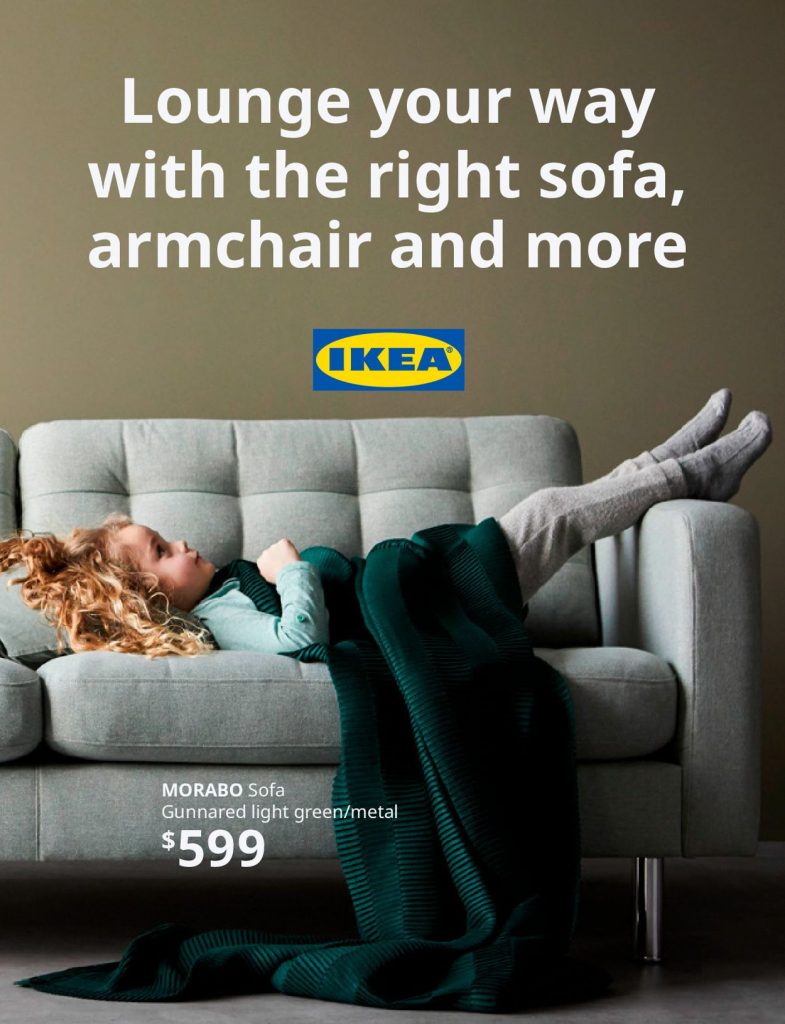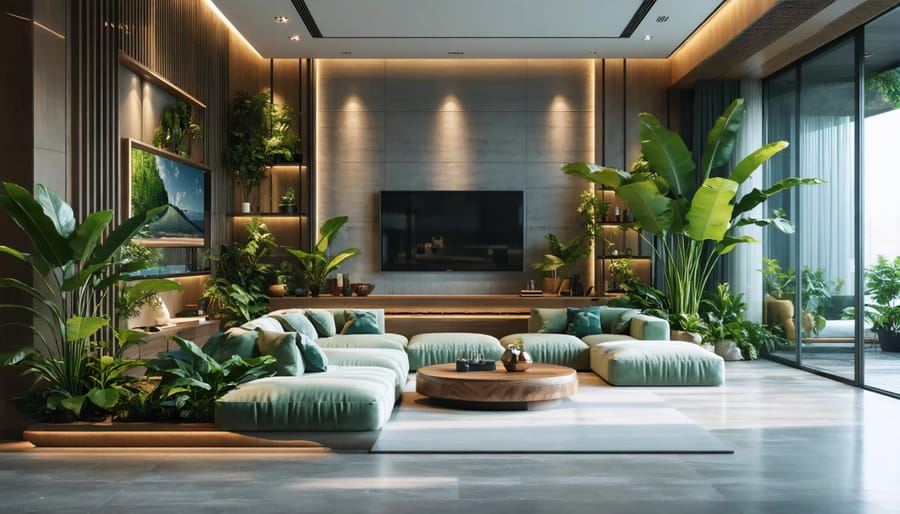
10 Game-Changing Interior Design Trends Reshaping Modern Homes in 2024
Modern interior design stands at a fascinating crossroads of sustainability, technology, and personal expression. Today’s homes aren’t just living spaces – they’re sophisticated ecosystems where functionality meets aesthetic innovation. From biophilic elements that bring nature indoors to smart home integration that transforms everyday routines, contemporary interior design reflects our evolving lifestyle needs while embracing environmental consciousness.
The latest trends reveal a dramatic shift toward multifunctional spaces that adapt to our hybrid work-life patterns, featuring modular furniture and flexible room dividers. Natural materials like bamboo, cork, and reclaimed wood dominate the scene, while curved forms and organic shapes replace stark minimalism. Technology integration has become seamless yet subtle, with hidden charging stations and voice-controlled lighting systems becoming standard features rather than luxury add-ons.
As we embrace these changes, sustainability isn’t just a buzzword – it’s the foundation of modern design thinking. Whether it’s through energy-efficient fixtures, recycled materials, or furniture that’s built to last generations, today’s interiors reflect a deeper understanding of our environmental impact while maintaining the perfect balance of style, comfort, and practicality.
Sustainable and Biophilic Design
Eco-Friendly Materials Taking Center Stage
Sustainable materials are revolutionizing modern interiors, with homeowners increasingly choosing eco-friendly options that look stunning while protecting our planet. Bamboo flooring has emerged as a popular alternative to traditional hardwood, offering similar durability but growing up to 30 times faster. Reclaimed wood adds character to spaces through statement walls and custom furniture pieces, each telling its own unique story.
Cork is making waves in both flooring and wall coverings, providing natural insulation and acoustic properties while being completely renewable. Recycled glass countertops sparkle with distinctive patterns, offering a sustainable alternative to conventional stone surfaces. Meanwhile, natural fibers like jute, hemp, and organic cotton are transforming textile choices in everything from upholstery to window treatments.
Many designers are incorporating salvaged materials in creative ways, from repurposed industrial elements serving as light fixtures to shipping containers converted into stunning office spaces. Plant-based materials like mycelium and agricultural waste composites are pushing the boundaries of sustainable design, creating beautiful, biodegradable alternatives for furniture and decorative elements. These eco-friendly choices not only minimize environmental impact but often bring unique textures and visual interest to modern interiors.
Bringing the Outdoors In
The integration of nature into interior spaces has become more than just a trend – it’s a movement toward healthier, more harmonious living environments. By incorporating biophilic design elements, homeowners are creating spaces that feel like a breath of fresh air. Large indoor plants, living walls, and natural materials are taking center stage in modern interiors.
Statement plants like Monstera deliciosa and Fiddle Leaf Figs have become the go-to choices for adding dramatic natural focal points. Meanwhile, hanging plants and vertical gardens maximize space while purifying the air. Natural materials like bamboo, cork, and reclaimed wood are being used for everything from flooring to accent walls, bringing warmth and texture to contemporary spaces.
The key is to layer these elements thoughtfully. Start with larger plants as anchor pieces, add smaller plants at varying heights, and incorporate natural textures through furniture and décor. Even small spaces can benefit from this approach – try mounting air plants on walls or creating a compact herb garden in your kitchen window.
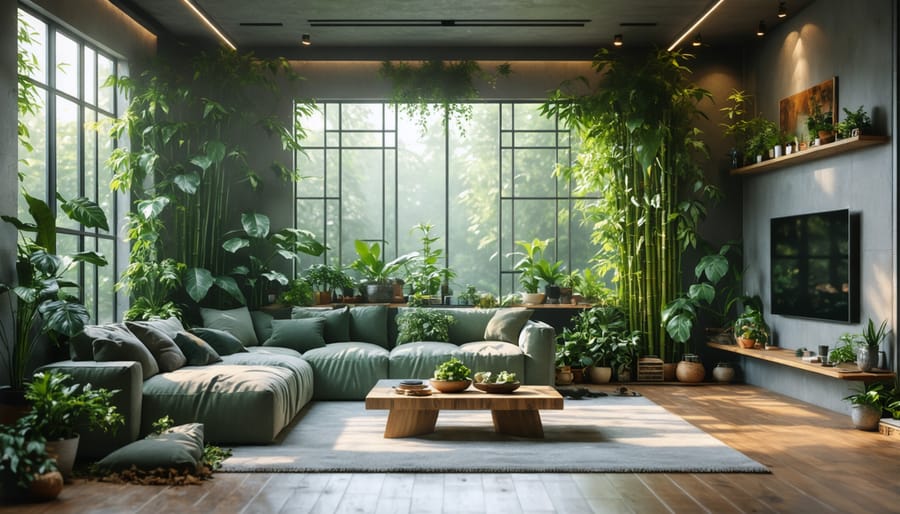
Smart Home Integration
Hidden Tech Solutions
Modern interior design has embraced smart home integration in ways that maintain clean, uncluttered aesthetics. Gone are the days of visible wires and bulky gadgets. Today’s tech solutions disappear seamlessly into your decor, with motorized blinds that tuck into ceiling pockets and smart speakers that double as stylish accessories.
Consider recessed ceiling speakers that blend perfectly with crown molding, or hidden charging stations integrated into kitchen countertops. Wall-mounted tablets can be concealed behind artwork, while smart mirrors in bathrooms display weather updates and news without compromising style. Even thermostats have evolved into sleek, minimalist touchscreens that complement modern wall designs.
The key is planning these elements during the design phase. Built-in cable management systems, strategically placed power outlets, and wireless charging pads incorporated into furniture pieces ensure your space stays both functional and aesthetically pleasing. Smart lighting systems can be controlled through discrete wall panels or smartphone apps, eliminating the need for multiple switch plates that interrupt wall space.
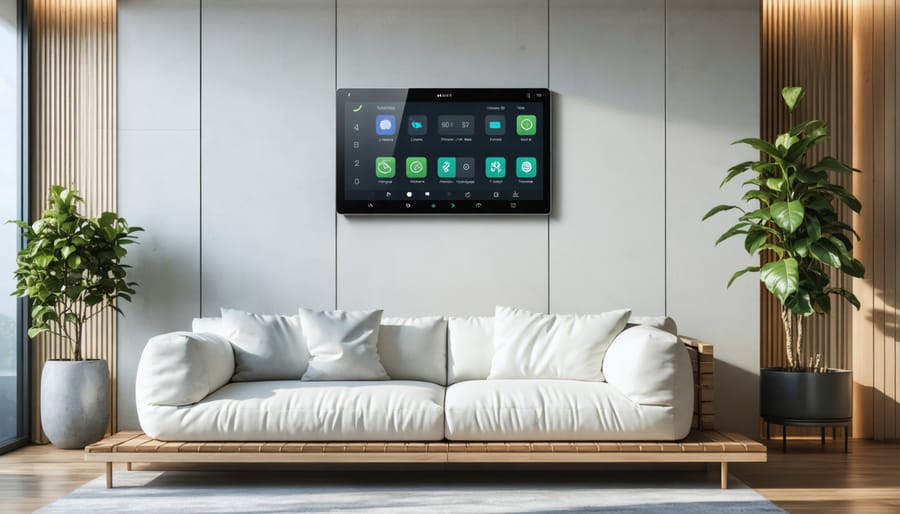
Voice-Controlled Environments
Voice-controlled environments have revolutionized how we interact with our living spaces, making home management more intuitive and convenient than ever. With simple voice commands, homeowners can now control everything from lighting ambiance to room temperature, creating the perfect atmosphere for any occasion.
Smart lighting systems respond to voice instructions to adjust brightness, color temperature, and even create preset scenes for different activities like movie watching or dinner parties. These systems can be programmed to work with popular virtual assistants like Alexa, Google Home, or Siri, allowing seamless integration into daily routines.
Climate control has become equally sophisticated, with smart thermostats that learn your preferences and adjust automatically. Voice commands can instantly modify temperature settings, activate fans, or adjust humidity levels for optimal comfort. Many systems also include scheduling features and energy usage reports to help maintain efficiency.
Home automation extends beyond basic controls, incorporating security systems, window treatments, and entertainment systems. Imagine walking into your home and saying, “I’m home” to trigger a welcoming sequence that turns on lights, adjusts the temperature, and plays your favorite music – all without lifting a finger.
Multifunctional Spaces
Transformable Furniture
In today’s compact living spaces, multifunctional furniture solutions have become essential for smart urban living. These innovative pieces seamlessly transform to serve multiple purposes, making them perfect for apartments and smaller homes. Popular examples include coffee tables that convert into dining surfaces, murphy beds with integrated desks, and modular sofas that reconfigure into guest beds or sectional seating. For more ideas on optimizing space, explore how to transform small spaces with multifunctional furniture.
What makes these pieces particularly appealing is their ability to adapt to your changing needs throughout the day. Consider ottomans with hidden storage that double as extra seating, or expandable dining tables that can accommodate intimate dinners or larger gatherings. The latest designs incorporate smooth mechanisms and durable materials, ensuring both functionality and longevity.
Storage-smart furniture is leading the trend, with pieces like staircase drawers and bed frames with built-in compartments becoming increasingly popular. These solutions not only save space but also help maintain a clutter-free environment, making rooms feel more spacious and organized. The key is choosing pieces that complement your lifestyle while maximizing every square foot of your living space.
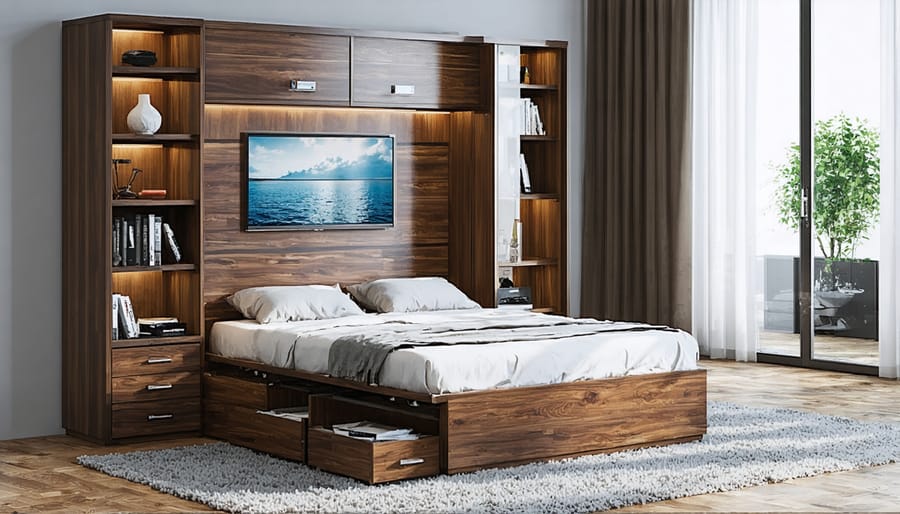
Hybrid Room Designs
As our living spaces become more compact and versatile, hybrid room designs have emerged as a game-changing solution for modern homes. These innovative spaces seamlessly blend multiple functions, allowing a single room to serve various purposes throughout the day. The key lies in strategic furniture selection and thoughtful space planning.
Consider a home office that transforms into a guest bedroom using a Murphy bed or a dining area that doubles as a workspace with built-in storage solutions. Smart furniture choices, like modular sofas with hidden storage or expandable tables, are essential for these adaptable spaces. Room dividers, whether through sliding panels, decorative screens, or strategically placed bookcases, help create distinct zones while maintaining flow.
Lighting plays a crucial role in hybrid spaces, with layered lighting systems that can adjust to different activities. Install dimmers and task lighting to seamlessly transition from work mode to entertainment space. Color schemes should remain neutral and cohesive, allowing the space to feel unified despite its multiple functions.
The success of hybrid rooms depends on organization and clever storage solutions. Invest in multi-functional pieces and maintain a clutter-free environment to ensure each purpose of the room can shine when needed.
Color and Texture Trends
2024’s Hottest Color Schemes
The color palette trends for 2024 are bringing warmth and nature-inspired tones to the forefront of interior design. Leading the way is the sophisticated pairing of sage green with warm terracotta, creating cohesive color schemes that bring the outdoors in. This combination works particularly well in living spaces and kitchens, where it adds both serenity and energy.
Deep blues paired with soft creams are making a strong showing, especially in home offices and bedrooms where focus and relaxation are paramount. For those seeking drama, rich burgundy combined with matte gold accents offers a luxurious touch that’s perfect for dining rooms and entryways.
The minimalist movement continues to evolve with a new twist: warm neutrals like coffee, oatmeal, and stone are being layered together, creating depth without overwhelming the space. These sophisticated combinations work especially well with natural materials like wood and linen, making them ideal for any room in the house.
For accent walls and bold statements, dusty mauve paired with charcoal grey is emerging as a favorite among designers, offering a modern take on traditional color combinations while maintaining versatility and timeless appeal.
Mixing Textures and Materials
Modern interior design is embracing the art of mixing textures and materials to create visually dynamic and emotionally engaging spaces. The key lies in layering different surfaces that complement each other while providing contrast. Think smooth velvet pillows against rough-woven throws, or sleek marble countertops paired with natural wood elements.
To master this trend, start by combining at least three different textures in each room. Popular combinations include matte and glossy finishes, natural and manufactured materials, and smooth and textured surfaces. For example, a living room might feature a plush wool rug, leather seating, and metallic accent pieces, creating depth through their distinct tactile qualities.
Natural materials like rattan, jute, and cork are making a strong comeback, often paired with modern elements like glass and polished metals. The contrast between organic and manufactured materials adds sophistication while maintaining visual interest. Don’t forget about walls and windows – textured wallpapers, woven window treatments, and 3D wall panels can transform flat surfaces into striking focal points.
Remember, the goal isn’t to overwhelm but to create a balanced, harmonious space that engages both visually and physically.
Personalization and Authenticity
Custom Design Elements
Custom design elements are transforming modern interiors from cookie-cutter spaces into personalized sanctuaries. Today’s trend focuses on incorporating unique pieces that tell a story and reflect individual personalities. Homeowners are increasingly commissioning local artisans to create bespoke furniture, from hand-crafted dining tables to custom-built storage solutions that perfectly fit their spaces.
Statement pieces like custom-designed light fixtures and one-of-a-kind wall art are becoming focal points in contemporary homes. DIY enthusiasts are getting creative with personalized wall murals, custom-built shelving units, and repurposed vintage items that add character to their spaces. For inspiration on such projects, consider exploring how to breathe new life into beloved old furniture.
The key is striking a balance between custom elements and mass-produced pieces. Consider starting with one signature custom item, such as a uniquely designed room divider or a personalized headboard, and building your design around it. This approach not only creates visual interest but also ensures your space remains uniquely yours while maintaining a cohesive look with existing decor.
Artisanal and Handcrafted Pieces
In a world of mass-produced furniture and decor, artisanal and handcrafted pieces are making a powerful comeback in modern interiors. These unique items add character, authenticity, and a personal touch that factory-made pieces simply can’t match. From hand-thrown ceramic vases to custom-built wooden furniture, these pieces tell a story and support local artisans.
The trend emphasizes quality over quantity, with homeowners choosing fewer, but more meaningful pieces. Local craftspeople are creating everything from woven textiles and hand-printed wallpapers to custom light fixtures and bespoke furniture. These items often incorporate sustainable materials and traditional techniques, making each piece environmentally conscious and rich in cultural heritage.
What makes this trend particularly appealing is its ability to create truly one-of-a-kind spaces. By mixing handcrafted elements with contemporary pieces, you can achieve a balanced, sophisticated look that reflects both modern sensibilities and timeless craftsmanship.
As we’ve explored throughout this guide, modern interior design continues to evolve with a focus on sustainability, functionality, and personal expression. The key trends we’re seeing – from biophilic design to smart home integration – reflect our changing lifestyle needs and growing environmental consciousness. To start implementing these trends in your own space, begin with small, impactful changes like incorporating natural materials or adding multifunctional furniture pieces. Remember that successful modern design isn’t about following every trend, but rather choosing elements that enhance your daily life and reflect your personal style.
Consider starting with a statement piece that embodies one of these trends, whether it’s a living wall for biophilic design or a smart lighting system for tech integration. Focus on creating spaces that are both beautiful and practical, using sustainable materials whenever possible. When planning your design updates, think about how each element contributes to both the aesthetic and functionality of your space.
For the best results, combine different trends thoughtfully – mix natural elements with modern technology, or blend minimalist design with warm, organic touches. The key is creating a balanced, harmonious space that works for your lifestyle while staying true to contemporary design principles.
